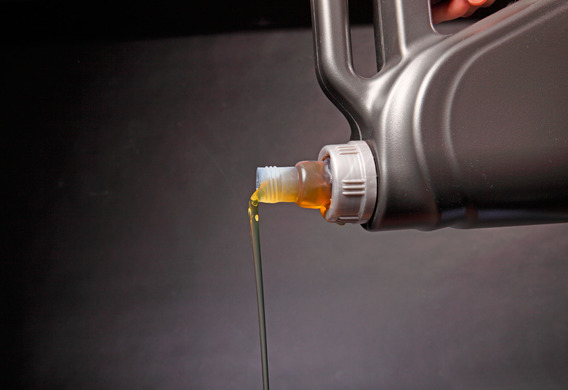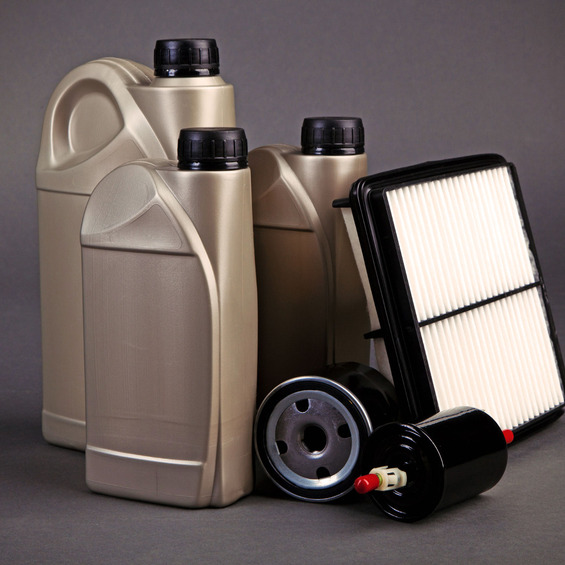
Composition of motor oils
In the case of motor oil, the driver must give preference to one type-mineral, synthetic or semi-synthetic. What's to stop? In this case, there is no "better" oil, there is optimal for a particular car. After all, the manufacturer takes into account all the nuances of the engine operation.
What's important to the engine oil?
The main properties of the engine oil, which are determined by international standards, are:
viscosity (SAE classification). Deviations from the norm lead to unpleasant consequences. If the viscosity is increased, the oil circulation becomes more difficult, the engine of the engine is worn down. If the oil is too liquid, its flow is increased, the friction of the engine parts is increased;
Motor oil is characterized by viscosity, chemical composition and additive quantity
number of additives and quality (API and ACEA classification, producer tolerances). These include wet and anti-tolerating oils, low or high oxidibility, anti-corrosive and lubricating properties.
The chemical composition of the oil, which is determined on the basis of course, affects all these characteristics.
Three fundamentals of motor oil
Mineral basis. The basis of such oil is derived from petroleum products. There are two types of mineral oil-classical and obtained by hydrocracking.
In the first case, the oil is as clean as possible from unwanted impurities and then optimizes its properties with various additives. The main lack of classical mineral oil is the instability of properties in conditions of too low and high temperatures, which may cause power outages.
In the second case, the oil is improved at the molecular level by a special method of hydrocracking. Hydrochingol oil is much more stable than classical, has optimal viscosity, better shows itself in conditions of high temperatures and high speeds.
If the optimal oil for a particular engine is mineral oil, the use of synthetic fuel may cause trouble, for example, by leaking oil through the sappers. Use of mineral oil is recommended for engines with high mileage, for engines that do not operate under heavy conditions for engines of domestic cars.
The most perfect oil is synthetic. Old engines use semi-interactive or mineral motor oil
The synthesis is considered to be the most advanced. Such frameworks are obtained by synthesizing in laboratories, which makes it possible to achieve better performance. The synthetic oils are chemically stable, which means that their properties do not change in adverse conditions, the oil is not oxidizes. The oil is resistant to low temperatures (the mean temperature of the temperature of 50 ° C) and their viscosity is optimal at high temperatures, they do not form the tanning, they have a low level of evaporation.

The synthetic base itself has many properties, and therefore requires a minimum of additive additives. It's another plus one of synthetics-such oil is very persistent, because the additives are destroyed first.
Synthetic types of motor oils are the most expensive. Their use is justified by large (e.g. frequent traffic congestion) by engine, car operation in very low or very high temperatures.
Compromise between two main types of motor oil oils on a semi-interactive basis. The mineral component of such oil usually takes up to 70%, the rest is synthetic. Such oils are cheaper than synthetic oils, but the characteristics are close to them. Semi-synthetic oils are considered ideal for moderate engine loads.
What's the role of additive?
Additives in motor oil may be up to 20-30%. They are divided into three types-modifying or modifying oil properties that are protective of the mechanisms and protections against the oil itself.
Viscosity modifiers, which control viscosity in different temperature conditions, are in almost every motor oil. Plus, some of the main additives are antidote and anti-zative, they protect the surface of the engine parts. The friction modifier reduces the friction of parts, resulting in fuel savings, antioxidants do not oxidizing oil, and corrosion additives protect the corrosion details. The detergents are often added to the oils (they flush the garment and wall attacks) and dispersioners (do not let foreign particles in the oil form rooms).
Is it always necessary to use one kind of oil?
The manufacturers ' recommendations on the use of oil are the engine of the new car. But the engine is worn out, its condition is changing, and initially recommended oil may not be the best option for him.
It is believed that most modern cars operate with a recommendation-in the new car (up to 150,000 km) the synthetic oil, car with mileage up to 250,000 km-semi-integral, and the "veterans" of the mileage-mineral.
The average oil replacement period is 6,000 km for mineral oil, 8,500 km for semi-synthetic and 10,000 km for synthetic oil.
What happens when you mix the oil?
If there is a need to replace the oil, the remnants of the old need to be merged. Mixing the oils of one composition, but different manufacturers, may lead to deterioration of its properties, since the common name "mineral" or "synthetic" does not imply the full identity of the components.
The means of obtaining synthetic oil from different manufacturers ' laboratories may differ. Mineral oil can also be obtained in a number of different ways, and hydrocrekative and classical oils differ in properties.
It is not so much recommended because of the basics as a basis for mixing. Mixing would disrupt their verified and worked-out balance-and oil properties may change unpredictably.







